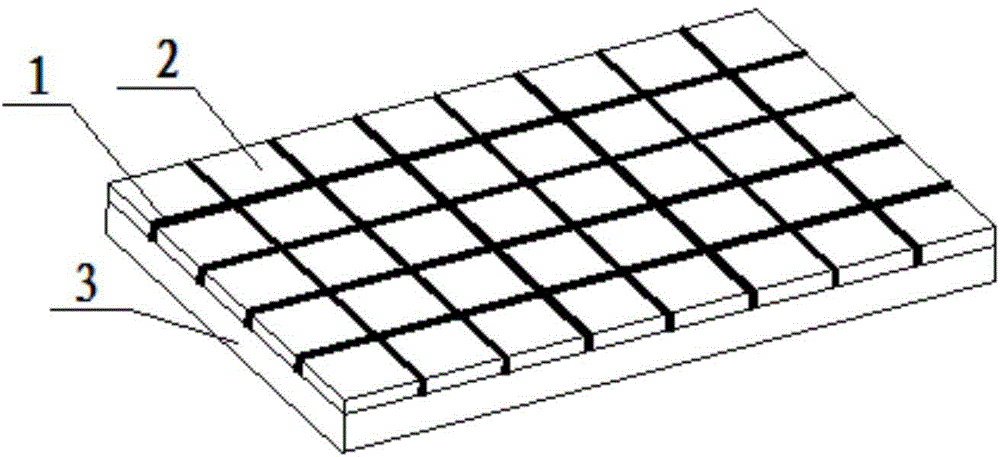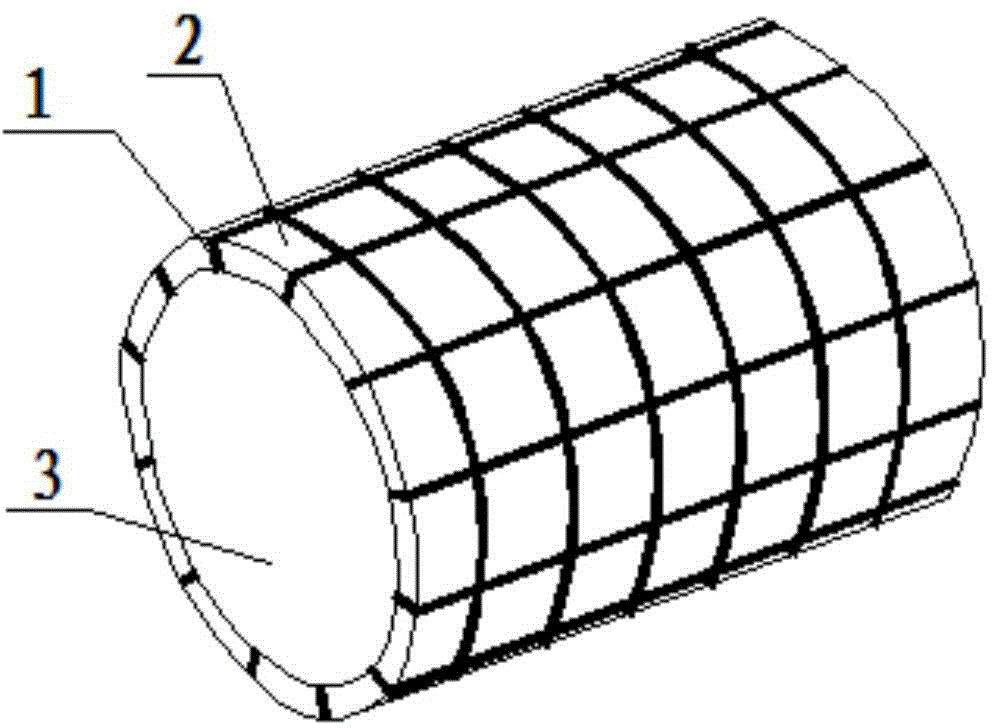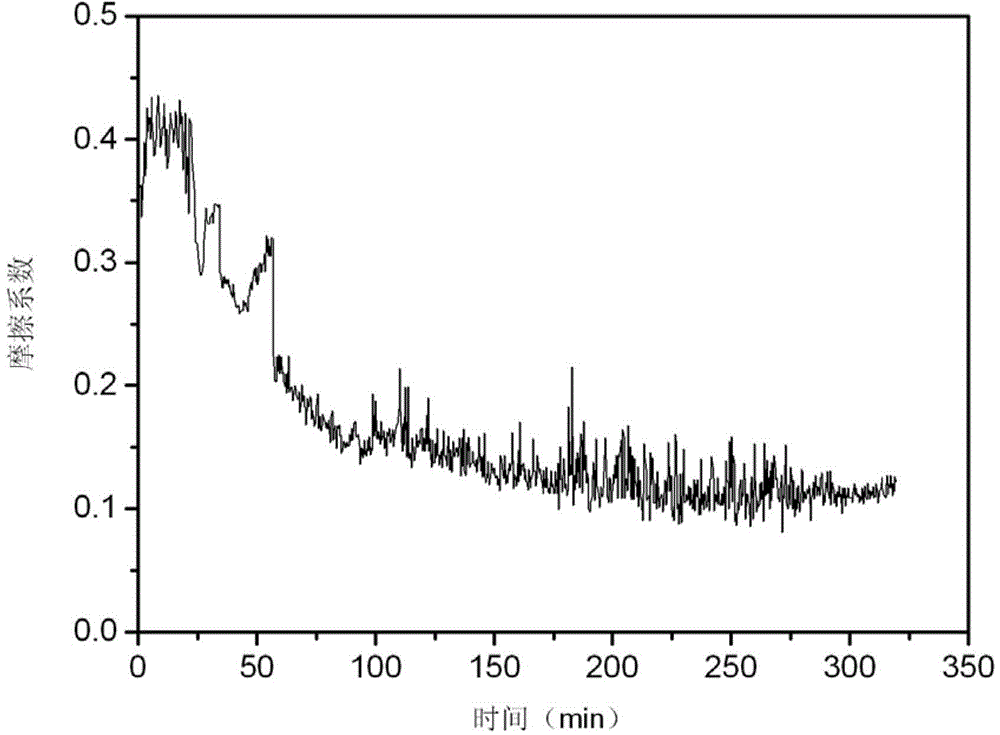Method for preparing antifriction wear-resistant coating on metal matrix surface
A technology for metal substrates and wear-resistant coatings, applied in metal material coating processes, devices for coating liquid on surfaces, coatings, etc., can solve problems such as poor bonding force, coating damage, hard wear-resistant coatings, etc. problems, to achieve long life, prevent the accumulation of plastic deformation, and prevent the effect of eccentric seizure
- Summary
- Abstract
- Description
- Claims
- Application Information
AI Technical Summary
Problems solved by technology
Method used
Image
Examples
Embodiment 1
[0032] This embodiment includes the following steps:
[0033] Step 1. Mix the wear-resistant powder and metal powder evenly at a mass ratio of 1:5 to obtain cladding powder. The wear-resistant powder is tungsten carbide powder, and the metal powder is nickel powder;
[0034] Step 2. Using the method of synchronous powder feeding, according to the preset grid-shaped scanning trajectory, under the argon protective atmosphere with a pressure of 0.01MPa, laser cladding the cladding powder described in step 1 on the surface of the metal substrate 3 , forming a plurality of cladding strips 1 that intersect horizontally and vertically, and a plurality of cladding strips 1 that intersect vertically and horizontally form a cladding skeleton with a grid structure; the laser power of the laser cladding is 6153W, and the spot diameter is 3mm. The powder feeding rate is 35g / min, and the scanning speed is 25mm / s; the metal substrate 3 is a TC4 titanium alloy substrate, the metal substrate 3...
Embodiment 2
[0040] This embodiment includes the following steps:
[0041] Step 1, uniformly mix wear-resistant powder and metal powder at a mass ratio of 1:10 to obtain cladding powder, the wear-resistant powder is titanium carbide powder, and the metal powder is iron powder;
[0042] Step 2. Using the method of synchronous powder feeding, according to the preset grid-like scanning trajectory, under the argon protective atmosphere with a pressure of 0.1MPa, laser cladding the cladding powder described in step 1 on the surface of the metal substrate 3 , forming a plurality of cladding strips 1 that intersect horizontally and vertically, and a plurality of cladding strips 1 that intersect vertically and horizontally form a cladding skeleton with a grid structure; the laser power of the laser cladding is 3886W, and the spot diameter is 2mm. The powder feeding rate is 20g / min, and the scanning speed is 30mm / s; the metal base 3 is 45 # Steel substrate, the metal substrate 3 is a cylindrical s...
Embodiment 3
[0048] This embodiment includes the following steps:
[0049] Step 1, uniformly mix wear-resistant powder and metal powder at a mass ratio of 1:10 to obtain cladding powder, the wear-resistant powder is titanium carbide powder, and the metal powder is iron powder;
[0050] Step 2. Using the method of synchronous powder feeding, according to the preset grid-like scanning trajectory, under the argon protective atmosphere with a pressure of 1 MPa, laser cladding the cladding powder described in step 1 on the surface of the metal substrate 3, Form a plurality of cladding belts 1 that intersect horizontally and vertically, and form a cladding skeleton with a grid structure; the laser power of the laser cladding is 512W, and the spot diameter is 0.5mm. The powder feeding rate is 13g / min, and the scanning speed is 20mm / s; the metal base 3 is 20 # Steel substrate, the metal substrate 3 is a flat substrate, the width of the cladding strip 1 is 1.16 mm, the height of the cladding strip...
PUM
| Property | Measurement | Unit |
|---|---|---|
| width | aaaaa | aaaaa |
| height | aaaaa | aaaaa |
| width | aaaaa | aaaaa |
Abstract
Description
Claims
Application Information
 Login to View More
Login to View More - R&D
- Intellectual Property
- Life Sciences
- Materials
- Tech Scout
- Unparalleled Data Quality
- Higher Quality Content
- 60% Fewer Hallucinations
Browse by: Latest US Patents, China's latest patents, Technical Efficacy Thesaurus, Application Domain, Technology Topic, Popular Technical Reports.
© 2025 PatSnap. All rights reserved.Legal|Privacy policy|Modern Slavery Act Transparency Statement|Sitemap|About US| Contact US: help@patsnap.com



